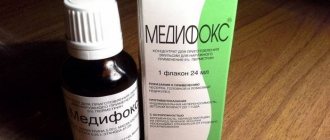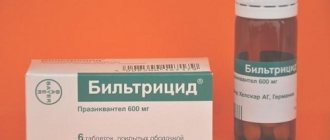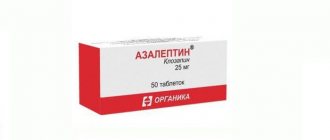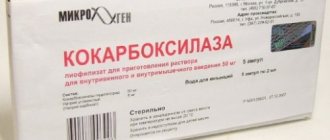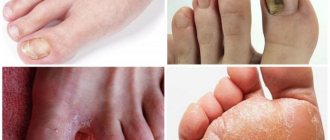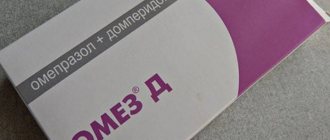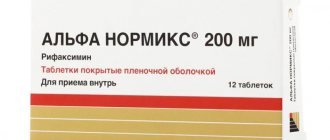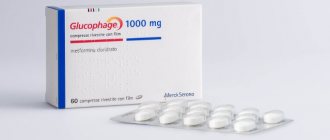In most cases, for depression, stress or other mental disorders, doctors prescribe the antidepressant Rexetine to their patients. This drug has proven itself to be an excellent helper in unpleasant situations for people. Its complex action has the highest efficiency. But in any case, if you or your loved one have been prescribed any drug, you need to familiarize yourself with it inside and out in order to avoid incidents when using it.
In the material presented below, our website has collected all the necessary information about the antidepressant Rexetine: reviews from doctors, pharmacological action, indications for use, correct dosages, storage conditions, as well as many other useful things about it. The entire article is based solely on reviews and recommendations of professional doctors.
Instructions for use of Rexetine
This medication is well known in modern psychiatry because it has stable antidepressant properties. Self-medication with Rexetine is strictly contraindicated; instructions for use are intended for informational purposes only. The medication has established itself as an effective medicine in the monotherapy of depression of various etiologies, but is no less popular as one of the “participants” in the complex treatment of panic disorders, social phobia, etc. It is important to clarify that in this way you can reduce the number of relapses, but not cure the underlying disease.
Composition and release form
Rexetine is available in the form of biconvex white tablets with a score line on one side and an engraving on the other. It has a film shell and is packaged in blisters of 10 pcs. There are 3 blisters in 1 cardboard package. Tablets are sold in two types - with a concentration of the active component of 20 and 30 mg. This antidepressant is intended for oral administration in a full course. The chemical composition contains the following components:
| Active ingredient | Excipients |
| paroxetine hydrochloride hemihydrate (22 mg or 34 mg) | macrogoal |
| titanium dioxide | |
| sodium carboxymethyl starch | |
| Magnesium stearate | |
| calcium hydrogen phosphate dihydrate | |
| polysorbate | |
| hypromellose |
Pharmacodynamics and pharmacokinetics
The active component, being a serotonin reuptake inhibitor, is a complex organic compound with a bicyclic structure. Its main task is to stop the ability of vesicles of the presynaptic membrane to replenish the loss of the active neurotransmitter serotonin, suppress the increased activity of the hypothalamus and thalamus, thereby reducing the intensity of the anxiety syndrome, moderate panic attacks and obsessions. Successfully fights excessive excitability of the subcortical structures of the brain.
After oral administration, the drug is productively absorbed from the gastrointestinal tract, and has a high degree of binding to plasma proteins - 93-95%. This provides a stable therapeutic effect, an increased concentration of the active component in the systemic circulation for a long time. The half-life lasts up to 24 hours, and inactive metabolites are excreted by the kidneys along with urine. With long-term use, the ability to accumulate is lost.
Indications for use of Rexetine
The drug has a systemic effect in the body and is actively used in modern psychiatry for the effective treatment of such diagnoses as:
- depression of various origins (for example, against the background of schizophrenia);
- bipolar disorder;
- obsessive-compulsive disorder;
- organic lesions of the central nervous system;
- manic-depressive syndrome (to reduce the stage of relapse);
- post-traumatic mental disorders;
- neuropsychiatric disorders with attacks of agoraphobia and panic;
- constant anxiety syndrome.
In this way, many manifestations of social phobia can be productively eliminated, but only with an integrated approach to solving the health problem. Conservative treatment is selected individually depending on the symptoms. Previously, such pharmacological prescription was the only treatment scheme for mentally ill people with social phobia.
Pharmacological properties of the drug Rexetine
Paroxetine is a selective 5-hydroxytryptamine (serotonin) reuptake inhibitor. The mechanism of therapeutic action of paroxetine for depression, obsessive compulsive disorders, and panic disorders is based on inhibition of neuronal reuptake of serotonin. The chemical structure of paroxetine differs from tricyclic, tetracyclic and other antidepressants. After oral administration, paroxetine is well absorbed and undergoes first-pass metabolism. Absolute bioavailability due to saturation of primary metabolic pathways varies. Simultaneous administration with food does not affect the pharmacokinetics of the drug. When taken regularly at a dose of 20 mg/day, the concentration in the blood plasma is 12–90 ng/ml (average 41 ng/ml), and the time to reach maximum concentration is 3–7 hours (average 5 hours). Paroxetine is extensively distributed in body tissues, including central nervous system tissues (average volume of distribution is 10–20 l/kg body weight, only 1% of the drug remains in the blood plasma). At blood concentrations ranging from 100 to 400 ng/ml, about 93–95% of paroxetine is bound to plasma proteins. Metabolized mainly in the liver. The main metabolites are polarized and associated products of oxidation and methylation. The predominant forms are those associated with glucuronic acid or the sulfate group. The pharmacological activity of the main metabolite is about 1/50 of the activity of the parent compound. The metabolism of paroxetine is associated with the cytochrome P450 IID6 system. In some individuals, due to a genetic defect, the activity of this isoenzyme may be reduced. The nonlinearity of the pharmacokinetics of paroxetine is due to the saturation of the cytochrome P450 IID6 enzyme system. The half-life of paroxetine ranges from 6 to 71 hours, with an average of 1 day. Equilibrium concentration in the blood plasma is achieved 7–14 days after the start of therapy; subsequently, the pharmacokinetics do not change with prolonged therapy. About 64% of paroxetine is excreted in the urine (2% unchanged, 62% as metabolites); approximately 36% - with feces (bile), mainly in the form of metabolites, ≤1% - with feces unchanged.
Directions for use and dosage
The antidepressant Rexetine is intended for oral administration for a course of 2-3 weeks, depending on the clinical picture. A single dose should be taken in the morning during a meal, without disturbing the integrity of the tablet, and take it with a sufficient amount of liquid. The meal does not reduce the desired therapeutic effect. As for daily dosages, they completely depend on the disease diagnosed by the psychiatrist:
- Depression. The daily dosage is 20 mg, which can be increased by 10 mg only once a week. The maximum dose is 50 mg.
- Obsessive-compulsive disorder. You also need to start with a single dosage of 20 mg, but increase it to a maximum of 60 mg.
- Panic attacks. The initial dosage is 10 mg, and it can only be adjusted in accordance with the stage of the pathological process.
- Social phobia. Therapeutic dose is 20 mg per day, maintenance is similar (depending on the severity of symptoms).
- Organic lesions of the central nervous system. Maintenance therapy should continue for 4-6 months.
Withdrawal syndrome
Conservative therapy with the participation of the active component paroxetine must be discontinued gradually, otherwise the risk of side effects and complications in the patient’s body increases. To avoid withdrawal symptoms, it is important to gradually reduce the recommended daily dosage and follow the reverse prescription regimen (every week minus 10 mg). This will allow you to experience noticeable improvements without a sharp deterioration in your overall health.
pharmachologic effect
The principle of operation of the antidepressant "Rexetine" is based on the ability of its active substance to influence the process of serotonin circulation in the brain. An organic formation with a complex chemical structure triggers a cycle of reactions. Their result is stimulation of certain parts of the central nervous system. At the same time, in other parts of the brain, their functions are suppressed and increased excitability is reduced. Such a complex effect on the central nervous system leads to a number of therapeutic effects.
special instructions
Paroxetine excludes effects on muscarinic, opioid, nicotinic or adrenergic receptors and does not provoke physiological dependence or generalized addiction. In addition, the intensity of reuptake of norepinephrine and dopamine is maintained. Among many other special instructions, according to the instructions for use, it is necessary to emphasize the following points:
- Oral administration of Rexetine may be accompanied by akathisia, when the patient experiences problems concentrating, complains of internal restlessness, and restlessness in one place. This means that it is advisable to stop driving for the period of therapy.
- When treating patients with diabetes, it is important to adjust insulin levels individually, since there is a high likelihood of developing hypoglycemia or hyperglycemia with serious health consequences.
- If you are additionally to be treated with lithium medications, it is important to monitor the level of this element in the blood plasma and avoid its pathologically unfounded jumps.
- Doctors do not rule out the occurrence of suicidal thoughts during treatment, and if such side effects occur, they require immediate discontinuation of the medication.
- With long-term use of Rexetine, a tendency to bleeding develops, especially in elderly patients. Doctors diagnose ecchymosis and purpura.
- In case of renal and liver failure, when creatinine clearance is less than 30 ml/min, it is necessary to individually adjust the dosage and reduce it to 20 mg/day.
Special recommendations from doctors
special instructions
If the patient was characterized by a manic state before treatment, then during therapy with Rexetine a relapse is possible (applies to all antidepressants).
Due to the insufficiently studied nature of patient tolerance to the combination of electroconvulsive therapy and this antidepressant, it is better not to use them in a single complex.
In a state of depression of any kind, every person is at risk of suicide, so the patient must be closely monitored.
In elderly patients, hyponatremia (a decrease in sodium ions in the blood plasma) very often occurs, but this is not something to be afraid of. Once the course of treatment is completed, everything will return to normal.
It is worth taking into account that during therapy with Rexetine, bruises of various sizes may begin to appear.
The patient's hyperclimmic state due to paroxetine occurs extremely rarely.
Let's return to suicidal risks; they manifest themselves significantly in patients aged 18-30 years. It is not necessary to have depression, and with other mental disorders it is quite possible that the patient may experience suicidal ideation. Therefore, the one who monitors the patient (there must be such a person) must be prepared for unplanned situations. At the first manifestations of suicidal thinking or, even worse, suicide attempts, it is necessary to take the person into the care of specialized centers, otherwise the consequences can be very sad.
During the course of antidepressant therapy, it is advisable to exclude the patient from driving a car and working in areas where reaction speed is important. This is especially true in the initial stages of treatment. However, all this is very individual.
Important! These recommendations are not given for show; they are extremely important during Rexetine therapy.
During pregnancy
This category of patients can be treated with this medication only under strict medical supervision. No clinical studies have been conducted in pregnant women, so doctors are being overly vigilant. If the potential benefit to the mother's health outweighs the risk of intrauterine pathologies, such medication is not prohibited.
- Thermometer for gas and electric oven. How to choose a mechanical or digital remote thermometer
- Oatmeal jelly for weight loss
- Electromechanical lock - overview of models and price. How to choose a mortise or overhead electromechanical lock
Use during pregnancy, lactation and childhood
The nature of Rexetine's action during pregnancy and lactation has not been fully studied, so it is advisable to avoid it.
The only exceptions are those cases when the potential benefits of therapy (at the discretion of the doctor) significantly outweigh all possible risks. As for use among healthy women capable of giving birth, contraception must be used while taking the drug.
Use among children is strictly contraindicated, as stated above, due to lack of clinical experience.
Rexetine and alcohol
This medicine is recommended for nervous disorders. During therapy, it is important to refrain from drinking alcohol. Otherwise, the intensity of side effects only increases and significantly reduces the patient’s quality of life. The most common complaints in this case are:
- increased arousal;
- increased sweating;
- nausea, less often – attacks of vomiting;
- dryness of the mucous membranes of the oral cavity;
- tremor of the limbs;
- dizziness;
- facial skin hyperemia.
Reviews about "Rexetine"
Consumers respond positively to the medicine, noting its high effectiveness. Many confirm the fact of rapid dulling of symptoms and relief of alarming manifestations. The use of the product has allowed a lot of patients to cope with difficult moments in their lives. Side effects during therapy occur quite often, but they are either not very pronounced or gradually disappear without dose adjustment.
The negative point is the high cost of the drug. Not everyone can afford even similar means, especially if it is necessary to conduct long courses.
Drug interactions
Rexetine is often included in a complex treatment regimen. It is important to choose combinations wisely to avoid side effects and minimize the risk of drug interactions. For example, there is no connection between MAO inhibitors and paroxetine. Other combinations are described below:
- When the drug is combined with Tryptophan, there are complaints of symptoms of hypertension, dizziness, nausea, and recurrent headaches.
- In combination with Warfarin, the risk of bleeding increases, so it is advisable to avoid such combinations.
- When combined with Sumatriptan, coordination of movements is impaired, general weakness develops, and an increase in the strength of reflexes (hyperreflexia) is possible.
- Simultaneously with liver enzymes, the pharmacokinetics and metabolism of paroxetine decreases.
- In combination with Phenobarbital, the half-life of paroxetine is reduced; when combined with Phenytoin, a negative effect of the latter cannot be ruled out.
- When theophylline is present in a complex therapy regimen, it is important to avoid its increased concentration in the blood by adjusting the dosage.
- With the simultaneous use of anticonvulsants, the patient's general condition worsens.
Compound
The active ingredient in the drug is paroxetine in the form of hydrochloride hemihydrate. "Rexetine" is the international trade name of the drug. Also in the main part of the product are magnesium stearate, sodium carboxymethyl starch, hypromellose and calcium hydrogen phosphate dihydrate. The film shell is represented by hypromellose, titanium dioxide, polysorbate 80 and macrogol 400. The dosages of all excipients are calculated taking into account the volume of the main substance.
Side effects of Rexetine
The medication is well tolerated by the body, but can cause side effects at the very beginning of the course. In this case, individual dose adjustment or replacement of the main medication is required. Possible side effects are:
- from the central nervous system: drowsiness, insomnia, extrapyramidal disorders, tremors of the limbs, increased irritability, internal anxiety, confusion, irritability, agoraphobia (fear of crowded places), disturbance of the sleep-wake phase, paresthesia;
- from the digestive system: lack of appetite, constipation, diarrhea, impaired liver function;
- from the myocardium: arrhythmia, tachycardia, lability of blood pressure, fainting as a consequence of systemic circulation disorders, hypertension, hypotension;
- from the organs of vision: attack of acute glaucoma, visual impairment;
- from the skin: local, allergic reactions, subcutaneous hemorrhages (hematomas), swelling, skin hyperemia, urticaria, itching, bronchospasm;
- from the genitourinary system: decreased libido, ejaculation disorder, difficulty urinating;
- others: hypoglycemia, thrombocytopenia, galactorrhea, myopathy, hyperreflexia, fever, taste changes, electrolyte imbalance (hyponatremia).
Analogues of "Rexetine"
If for some reason Rexetine is not suitable for the patient, only the attending physician can select an analogue. The list of antidepressants is quite extensive, each group has its own advantages or disadvantages. To combat the pathological conditions listed above, a neurologist or psychiatrist can select remedies based on similar or other active ingredients with the desired characteristics. The most common include: “Parelax”, “Adepress”, “Xet”, Luxotil”. They also contain paroxetine, but it has a different chemical form.
Doctors do not recommend trying to independently select cheaper analogues to replace Rexetine, only based on the similarity of pharmacological groups of products. Such experiments threaten to increase the severity of the clinical picture and cause side effects.
Overdose
If you systematically violate the dosage of Rexetine, an increase in side effects is observed. Patients complain about:
- dilated pupils;
- dry mucous membranes;
- dizziness;
- migraine attacks;
- dilated pupils;
- signs of food poisoning;
- trembling of limbs;
- facial skin hyperemia;
- nausea, vomiting.
There is no specific antidote, so after dosage adjustment or drug withdrawal, treatment will be symptomatic. The first step is to rinse the stomach and artificially induce vomiting. Then take sorbents and carry out symptomatic treatment for medical reasons. Additionally, oxygen therapy (oxygen therapy) is indicated.
Drug overdose
Despite clearly regulated dosage standards, due to individual characteristics or insufficient attention to taking Rexetine, an overdose may occur.
Its main symptoms are:
- gagging and nausea
- significant increase in pupil size
- overexcitement
- severe increase in sweating
Dizziness - salivation disorder
- general weakness
- dizziness
- limb tremors
- pronounced redness of the skin, bruising (hyperemia)
Convulsions or coma are excluded. As for deaths, they are extremely rare.
An overdose of Rexetine occurs as a result of the simultaneous use of 2 or more grams of the drug, as well as when mixing it with alcohol or other medications. As you can see, over a wide range of dosages, this antidepressant is not dangerous.
In case of overdose, the following measures are taken:
- Gastric lavage.
- Every 5 hours the patient should consume the sorbent (within 2 days after the incident).
- In case of respiratory failure, oxygenation must be carried out.
In case of an overdose of Rexetine, the best option is to consult a doctor. They will monitor all vital organs and give the most correct recommendations for treatment.
Bepanten for burns: rules of use and duration of treatment
Contraindications
Not all patients can take the drug Rexetine; the instructions for use detail medical contraindications. This:
- arrhythmia of ventricular origin;
- angle-closure glaucoma;
- prostatic hyperplasia;
- in combination with medications that inhibit the enzyme monoamine oxidase;
- increased sensitivity to synthetic components (idiosyncrasy);
- long QT syndrome;
- age up to 18 years.
Interaction with other substances
When treating with the drug, it is necessary to take into account reactions that occur when combined with other substances.
Medicines
When using Rexetine simultaneously with other medications, the following body reactions may occur:
| A drug | Possible reaction when taken with Rexetine |
| Tryptophan | Dizziness, nausea, headache |
| Warfarin | Increased bleeding |
| Sumatriptan | Loss of coordination and general weakness |
| Lithium | Blood lithium levels need to be monitored |
| Cimetidine | Increased plasma paroxitin levels |
| Phenobarbital | Decreased plasma levels of paroxetine and its elimination half-life |
| Phenytoin | Increase in adverse reactions from taking this drug |
| Tricyclic antidepressants | Metabolic slowdown |
| MAO inhibitors | Various unwanted effects |
| Protein binding agents | Increased side effects of the drug |
When taken with benzodiazepines, no increase or decrease in the effect of the drugs was found.
When treating with Rexetine, you should not take other medications without further consultation with your doctor.
Rexetine and alcohol
When tablets interact with alcohol, no pronounced adverse reactions were observed, but given the fact that paraxetine directly affects the condition of the liver, you should not mix alcoholic beverages and medicine. Otherwise, an overdose of the drug or deterioration of liver function is possible.
Analogs
Reviews about Rexetine are positive, but this medication is not suitable for all patients. If side effects occur at the very beginning of the course, the doctor recommends one of the analogues suggested below as a replacement:
- Xset. An antidepressant in tablet form, the initial dose of which is 20 mg. It is recommended to take the dose in the morning with meals.
- Luxotil. You will be treated for 2-3 weeks, take 1 tablet every morning with meals, without chewing.
- Parelax. These antidepressants should be taken orally in 1 dose. for 2-3 weeks.
Release form, composition and packaging
The antidepressant drug Rexetine is available in the form of several types of tablets. The first ones are covered with a white shell (or very close to white) and have a round-convex shape. The diameter of each tablet is 11 mm. Each of them is equipped with an engraving “X20” and a score. When you break the tablet, you will not see anything surprising - the same white color.
Rexetine
One tablet of this type contains the following substances:
- paroxetine hemihydrate hydrochloride about 23 mg - the substance has a strong anti-anxiety, calming effect on humans; the share of paroxetine itself is 20 mg
- calcium hydrogen phosphate dihydrate - this and the substances presented below are auxiliary, aimed at increasing the absorption of the drug by the body
- sodium starch glycolate (A)
- titanium dioxide
- hypromellose
- Magnesium stearate
- macrogoals 4000 and 6000
- polysorbate 80th
The second type of tablet is similar in appearance to the previous one, but has a different marking (X30 and risk), due to a stronger effect on the body. Compound:
- paroxetine hydrochloride hemihydrate about 34 mg, of which paroxetine itself is 30 mg
- excipients are the same
They are produced in white cardboard boxes, in the upper right corner on a blue background there is the inscription “Rexetine”, and in the lower left on a yellow background the number of tablets in the pack is indicated - “30”. The tablets themselves are in three blisters, 10 pieces in each.
Important! All information presented above and some information below is described according to the official instructions for the drug.
Rexetine price
You can buy an antidepressant with a concentration of the active ingredient of 20 mg at the pharmacy. Its average price is 750-900 rubles. Below are the prices for Moscow, which will help you quickly decide on the place of purchase:
| Pharmacy name | Price, rubles |
| ZdravZone | 780 |
| Pharmacy IFC | 875 |
| ElixirPharm | 880 |
| Doctor Stoletov | 760 |
| Samson-Pharma | 820 |
Use for liver and kidney dysfunctions
Rexetine should be taken with extreme caution in case of functional liver or kidney failure. Such patients should start with 10-20 mg per day; if there is no or very little effect with this treatment, depending on tolerability, the dose can be increased slightly.
But it is still very important to keep the current dosage at the lowest possible level. All this is associated with an increase in the concentration of paroxetine in a person’s blood, due to poor functioning of organs, and to taking the drug, which has a rather detrimental effect on the patient’s body if it is not treated rationally.
Fucicort cream: reviews, principle of action and other useful information
Reviews from patients who took the drug
Positive reviews about the action of the medication predominate, although there are cases of lack of positive dynamics:
Natalia, 35 years old: “Before that I took another antidepressant, but it no longer worked. The doctor prescribed me Rexetine tablets with a dosage of 30 ml, literally on the 4th day my mood improved, negative thoughts disappeared and even my complexion became fresher. More than a year has passed and I have not had a relapse.”
Tatyana, 45 years old: “I would like to leave a positive review about the drug, since it was it that helped me return to a full life after a divorce. After using it in the first days, there was constant drowsiness, but then it went away, and the depressive state never returned to me.”
Denis, 25 years old: “The doctor prescribed me these pills after the appearance of suicidal thoughts due to post-traumatic disorder. I can’t say anything good about them: I had headaches and slept poorly, took them for 2 months, but did not notice any improvement in my condition. Changing the antidepressant had a positive effect within a week.”

